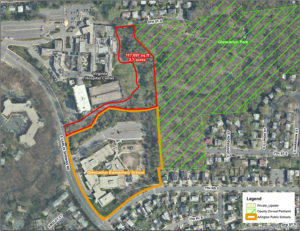 Peter’s Take is a weekly opinion column. The views and opinions expressed in this column are those of the author and do not necessarily reflect the views of ARLnow.com.
Peter’s Take is a weekly opinion column. The views and opinions expressed in this column are those of the author and do not necessarily reflect the views of ARLnow.com.
Twice this year (in May and again this month), the County Board scheduled, but then postponed, a vote on a County staff recommendation to extend parking meter hours from 6-8 p.m.. The Board should just say NO.
Background
In support of its recommendation to extend the hours from 6 to 8, County staff stated:
Use of curbside space by long-term parkers after 6 p.m. limits the number of spaces available for short-term parkers. This limitation has a negative impact on adjacent commercial businesses that are generally dependent on convenient curbside parking … The proposed changes in … hours of operation would help achieve the goals adopted in the Parking Element of the Master Transportation Plan…
The Parking Element is a 31-page, single-spaced document adopted in November 2009. This document proposes an explanation why, in theory, at certain times of the day, parking meters and their fees can play an important role in fostering the health of adjacent businesses.
Discussion
The Arlington businesses whose health properly is the concern of the staff’s recommendation are strongly OPPOSED to the staff’s recommendation. In a Sept. 24, 2015 letter to the County Board, the Arlington Chamber of Commerce had this to say:
The Chamber recently reached out to our retail and restaurant members regarding the proposed parking meter hour changes …The feedback we received was unanimously in opposition to the extension of parking meter hours…The Arlington Chamber represents 700 businesses with an interest in Arlington County. We appreciate the planning theory that increasing parking meters and hours can in fact lead to more parking spaces and thus more people willing to drive to an area to frequent businesses. However, our members … do not believe that the proposed changes will produce the intended result.
The Crystal City BID wrote a Sept. 25, 2015 letter to the Board, similarly requesting that the two-hour extension be denied:
Despite Arlington’s success in transit-oriented development, retail and restaurant businesses still rely heavily on patronage by customers who drive. With other emerging centers of activity in Tysons, Mosaic District, National Harbor and many more, additional consideration must be given to ensure that the County is not driving people, potential customers, and tax dollars away with ill-timed and burdensome policies.
Conclusion
Without extending hours, ideas worthy of discussion with stakeholders include:
- smart phone aps that would inform drivers of availability in nearby parking garages and potentially curbside spaces as well,
- surge pricing technology where meter rates could be calibrated up or down to demand,
- special parking-garage rates for restaurant service workers, many of whom occupy curb space that businesses with scarce parking would prefer be left to customers.



